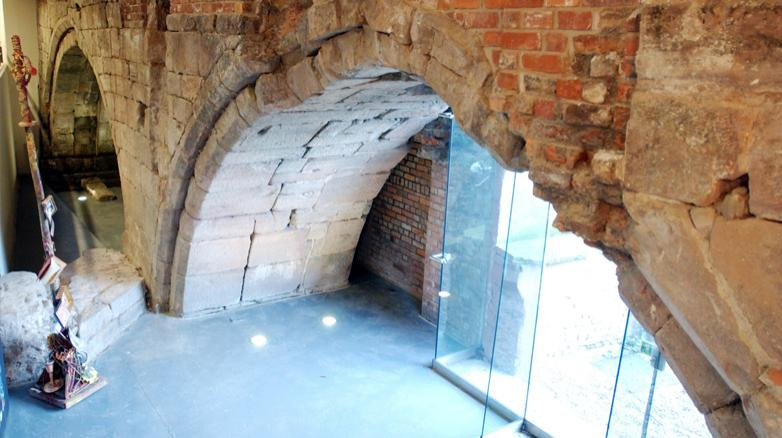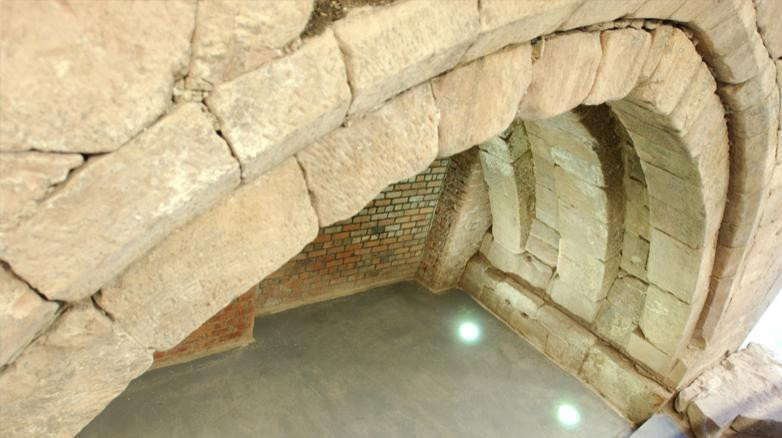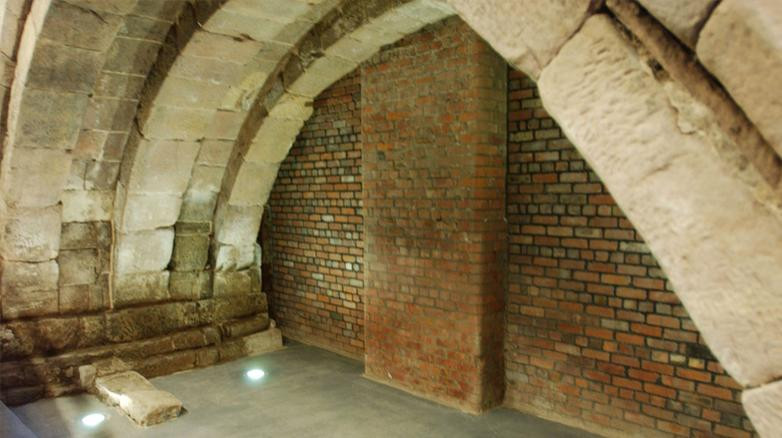Maysand developed an ingenious technique more appropriate to the operating theatre to help save one of city centre Manchester’s oldest structures, The Hanging Bridge. When cracks were discovered in the bridge, Manchester City Council called in the experts. Following a series of surveys by Buro Happold engineer Barry Cockerham, Maysand was chosen to devise an emergency repair plan along with the engineers and English Heritage representatives.
Lying directly beneath Hanging Bridge Chambers near the Cathedral, Hanging Bridge itself was hidden from view for centuries but revealed when the chambers were redeveloped as the Cathedral’s Visitor Centre. Grade 1 listed bridge in Manchester city centre which dates back to medieval times.
The project was a fascinating cameo of the Maysand approach. First we sealed the joints and voids around the damaged stones by squeezing in clay. Then, using a hypodermic syringe, injected a special mix of lime grout through the clay into the voids behind. We opened up holes to check the grout flow and allow the air to escape before replugging them with clay to stop the grout running out.
After 48 hours the clay was removed leaving the grout firmly in place and the stonework securely repaired. In another process, a partly fractured voussoir was pinned or skew stitched with stainless steel dowels before the fracture was filled using the same grout injection process. Not only was it an ingenious solution, it was a painstaking operation involving having to work upside down from a Michelangelo-like position.
All the work was carried out by hand so as not to damage or scratch any masonry; even with acrow props we had to use protective hessian to safeguard the stone surface and they could only add support to the stone, not put the structure under any pressure.


